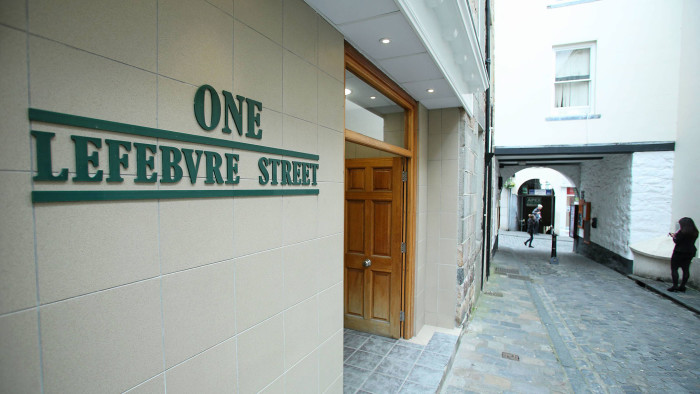Channel Islands Securities Exchange bounces back from scandal

Roula Khalaf, Editor of the FT, selects her favourite stories in this weekly newsletter.
Tucked away in a picturesque side street near the seafront of St Peter Port is a stock exchange that lists bonds issued by some of the world’s biggest companies. It is the deceptively peaceful setting for one of the most turbulent episodes in the island’s recent history.
The fallout from the collapse of an investment scheme, known as Arch Cru, led to a record fine for the exchange and the resignation of Guernsey’s chief minister, Peter Harwood, this year. In Britain, investors fought for compensation over losses that ran into hundreds of millions of pounds.
Jon Moulton, the private equity veteran who stepped in to restructure and rebrand the stock exchange last year, describes the affair as “very messy”, although he stresses there was “no malefaction on the island”.
The scandal has not been the only threat to the exchange. In the summer, Ed Balls, the shadow chancellor, announced plans, if the Labour party is elected, to block companies from channelling tax-free interest out of the UK using the “quoted eurobond exemption”, which eliminates withholding tax on interest paid to foreign investors.
A crackdown on the exemption would have a big impact on the Channel Islands Securities Exchange, which has become a popular and inexpensive way of listing loan notes to make them eligible for the exemption.
The withdrawal of the quoted eurobond exemption “would very much restrict our volumes”, says Mr Moulton. “Are we concerned that it will happen? Of course.”
For the moment, the exchange is on track for a successful year. Mr Moulton, who renamed the revamped trading centre the Channel Islands Securities Exchange, says it has largely put the problems of its predecessor – the Channel Islands Stock Exchange (CISX) – behind it.
When talking to London law firms about new business, “the issue is extraordinarily rarely raised in meetings”, Mr Moulton adds.
Many details of the “issue” remain under wraps, but the results of a lengthy investigation by the Guernsey Financial Services Commission (GFSC) into the role of the CISX in the Arch Cru affair were published in October. It investigated the role of the exchange in “transactions [that] had been implicated in possible market manipulation and other forms of irregular trading”.
CISX, on which some of the Arch Cru securities were listed, admitted it was “seriously at fault”, although all managers and directors were cleared of misconduct.
The profile of the case was heightened by the involvement of Mr Harwood, who was Guernsey’s chief minister until February. He had been previously been chairman of the watchdog Guernsey Financial Services Commission (GFSC) while also director of the Channel Islands Stock Exchange.
This concentration of power created a challenge for the GFSC as it investigated the matter. It tried to escape any charges of bias by asking the chairman of the Bar Council to choose a QC to adjudicate. Barristers from London were also appointed to sift the evidence.

Despite being cleared, Mr Harwood resigned in February to protect the reputation of his office from further media attention. William Mason, director-general of the GFSC, says there was no real conflict of interest.
“To the best of my knowledge, Peter Harwood took care to manage conflicts very carefully,” he adds.
The issue highlights a challenge for the island in finding a sufficiently deep pool of talented individuals to draw on for certain roles. But when it came to sorting out the exchange’s problems, it was able to call on some high-profile businessmen. Mr Moulton took the lead, announcing in October 2013 plans to suspend new listings for up to a month while the exchange was restructured.
The announcement was a shock and “unnerved” some sources of business, according to Joe Truelove, head of fund services at Carey Group, a financial services company that was a founder member of the exchange. In the event, it shut for three days and no business was lost.
Rebuilding the reputation of the exchange – also tarnished by a 2012 court ruling concerning a £70m tax fraud involving companies listed on the CISX – required more effective regulation. The new structure separates regulatory and commercial aspects of the exchange. Mr Moulton says “anything that looks vaguely colourful” is sent for the board to consider.
Cracking down on the regulatory failings of the old exchange has been crucial for its survival. But there are likely to be many challenges ahead, including Labour’s planned changes to British tax law and a tougher regulatory climate.
However, Mr Moulton is upbeat about the scope for exploiting the differences between the island’s regulations and those elsewhere.
“There is substantial investor demand for all kinds of opportunities of a legitimate nature which are not caught by strange regulations.”
Regulatory arbitrage, which Mr Moulton defines as “avoiding regulatory suppression”, creates opportunities, he says.
Comments